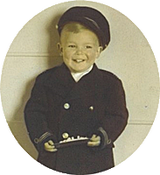|
During our 2019 season, Larry Belzac, a former photographer with the Royal Canadian Air Force, visited HMCS Ojibwa. We were able to fill in some memories that had been lost to the demon rum during a previous visit in 1966. Here is the story in his own words: Benefit of Integration Thanks to the integration of the Armed Forces, I was posted to the Navy Photo Section in Halifax, NS. I had the honour of being one of the first pigeons (Air Force guy) to grace the halls of any Navy Photo Section if not the Navy itself. Duty Photo Assignment: The sailors were a good bunch of guys and they made me feel at home; but, I cannot remember any of their names now. However, I won’t forget my time there! Come meal time we all ate in the area where the photographs were taken. I was still on standby to photograph part of one of the engines as soon as they were able to shut it down.
0 Comments
Preface
Set Up
You can bet your buttons that visitors to HMCS Ojibwa, as enthralled as they are, want to know how submariners could get out of the submarine in the event resurfacing was not an option - and neither were the doors that visitors use today! Such trepidation is not a matter of too many scary movies; it is a matter of too many lives sacrificed to the deep. Former submariner Paul Connolly, had a moment of fame in the midst of HMCS Ojibwa's role in the development of Deep Submergence Rescue Vehicles (DSRVs) to serve that purpose.
The Synchro Lift used to Access the Shed The casing is not what it used to be when Lucky was the Scratcher's Dickie. All the heavy bits and pieces under the casing were removed to lighten the submarine so it could navigate the shallow waters in Port Burwell harbour.
1967 Ojibwa looks on as 4 minesweepers pass by. Left to Right: HMCS Thunder 161; HMCS Fundy 159; HMCS Chignecto 160; and HMCS Chaleur 164. All work and no play... Suffice it to say, there are no dull submariners.
|
AuthorArchives
May 2020
Categories
All
|









 RSS Feed
RSS Feed